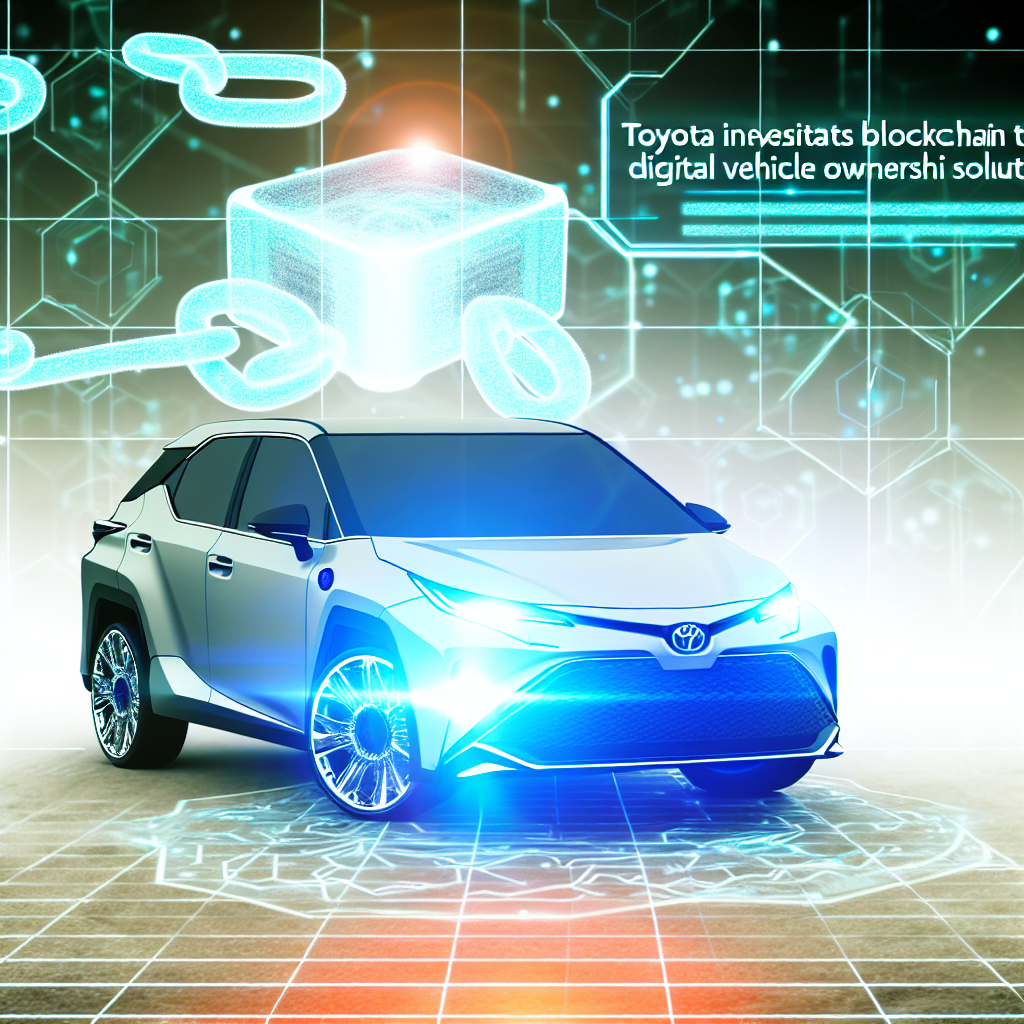The rise of blockchain technology has revolutionized cross-border transactions, fostering the emergence of borderless networks that are particularly significant in the realm of real-world assets (RWAs). Nonetheless, within this asset class, notably in mobility, it cannot be simplified as it remains constrained by existing commercial practices, regulations, and institutional frameworks.
Toyota’s Blockchain Lab, the research and development division of the automaker, has been actively investigating the blockchain and its possible applications in their vehicles. This could help navigate traditional obstacles such as registration, insurance, and maintenance through the establishment of a verifiable “Trust Chain” that illustrates multi-party relationships on-chain.
Current-Day Obstacles
Last year, they introduced the concept of the Mobility-Oriented Account (MOA) to explore this framework from the user-mobility connection perspective. The initiative sought to define mobility as an “abstract account,” but it also highlighted that this idea cannot fully encompass the intricate relationships involved.
Their latest paper is a continuation of the research from a different angle. While MOA aimed to illustrate mobility from an individual entity perspective, the current objective is to depict it with the network context in mind. We can already see mobility as part of a network, considering the complex relationships that surround it.
Mobility is being redefined—not merely as a transportation means but as a valuable asset that generates wealth. The emergence of electric and autonomous vehicles is stimulating global interest in the value of mobility and how it can be disentangled from conventional foundations. Three structural gaps hinder efforts to achieve this vision.
The first is organizational, as vehicle registration records and operational data are managed by governments and corporations, which limits initial valuation and assessment. The second is industrial, where a lack of an open and interoperable network exists among entities in the ecosystem. Lastly, the national gap lies in the absence of unified registration, tax, and insurance records under a single certificate.
The Mobility Orchestration Network (MON)
This innovative concept is a protocol-layer blockchain architecture intended to orchestrate trust and unlock the value of mobility assets across organizational, industrial, and national divides. It integrates three on-chain verified proofs, or Trust Chains, as a single proof cannot fully encapsulate the value of mobility assets.
Institutional Proof: Vehicle title/registration, insurance compliance, to establish legality
Technical Proof: VIN, manufacturing data, sensor integrity, to ensure it’s fit for purpose
Economic Proof: Usage metrics, maintenance, and revenue history, to attest to economic value
This is how the MON concept tackles the organizational gap. The introduction of Trust across sectors addresses the industrial gap, seamlessly connecting them and thereby enhancing the value of mobility. We can see it as a catalyst, primarily orchestrating the numerous networks that collaborate.
The objective for addressing the final, national gap is to facilitate global value circulation without altering existing local ecosystems. Importantly, MON is structured as a protocol rather than a single platform, promoting seamless integration of various systems across borders.
Real-World Implementation
Thus far, it has been illustrated how Trust Chains can define the on-chain identity of a mobility asset. MOA serves as a container for this identity, holding the associated proofs, but to comprehend diverse types of information, it is divided into two distinct accounts.
T‑MOA (Trust-side): Contains finalized institutional and economic proofs
U‑MOA (Utility-side): Manages real-time operational verifications (e.g., driver credentials, vehicle status)
Additionally, a tokenization framework is necessary, facilitating a gradual transition from non-fungible mobility ownership (via NFTs) to fungible financial assets. This reflects its evolving nature—from ownership to liquidity.
How It Looks As A Prototype
MON uses a multi-chain model, employing Avalanche as its foundational layer, and deploys separate chains for Trust (MON), Capital (tokenized assets), Utility (mobility operations), and Stablecoin networks—all connected through Avalanche’s Interchain Messaging (ICM) system.
The ICM serves as the infrastructure ensuring comprehensive and secure communication across different blockchain networks. Several prominent protocols are integrated within this complex network, including IBC from Cosmos and CCIP from Chainlink.
A distinct structure called the Trust Gateway functions as the off-chain bridge to on-chain trust, involving several mechanisms like Verifiable Credentials, Decentralized Oracles, Trusted Intermediaries, and others.
Binance Free $600 (CryptoPotato Exclusive): Use this link to register a new account and receive $600 exclusive welcome offer on Binance (full details).
LIMITED OFFER for CryptoPotato readers at Bybit: Use this link to register and open a $500 FREE position on any coin!

